Your cart is currently empty!
Hanfu Sailor Mercury, the Nymph of River Luo 洛神(宓妃)

And we’re back after a short break, to continue with the Sailormoon series lest you forget!
I’ve always liked Sailor Mercury growing up because she’s the smart one– like the Hermione of Sailormoon. But I struggle to find a Chinese goddess who was known for her wisdom. There wasn’t any female sage either because there seems to be a strong sense of mysticism enshrouding the female identity and power regardless of it being a matriarchal or patriarchal society. Perhaps Oscar Wilde had a moment of connection there with the ancient Chinese when he wrote that “Women are meant to be loved, not understood”.
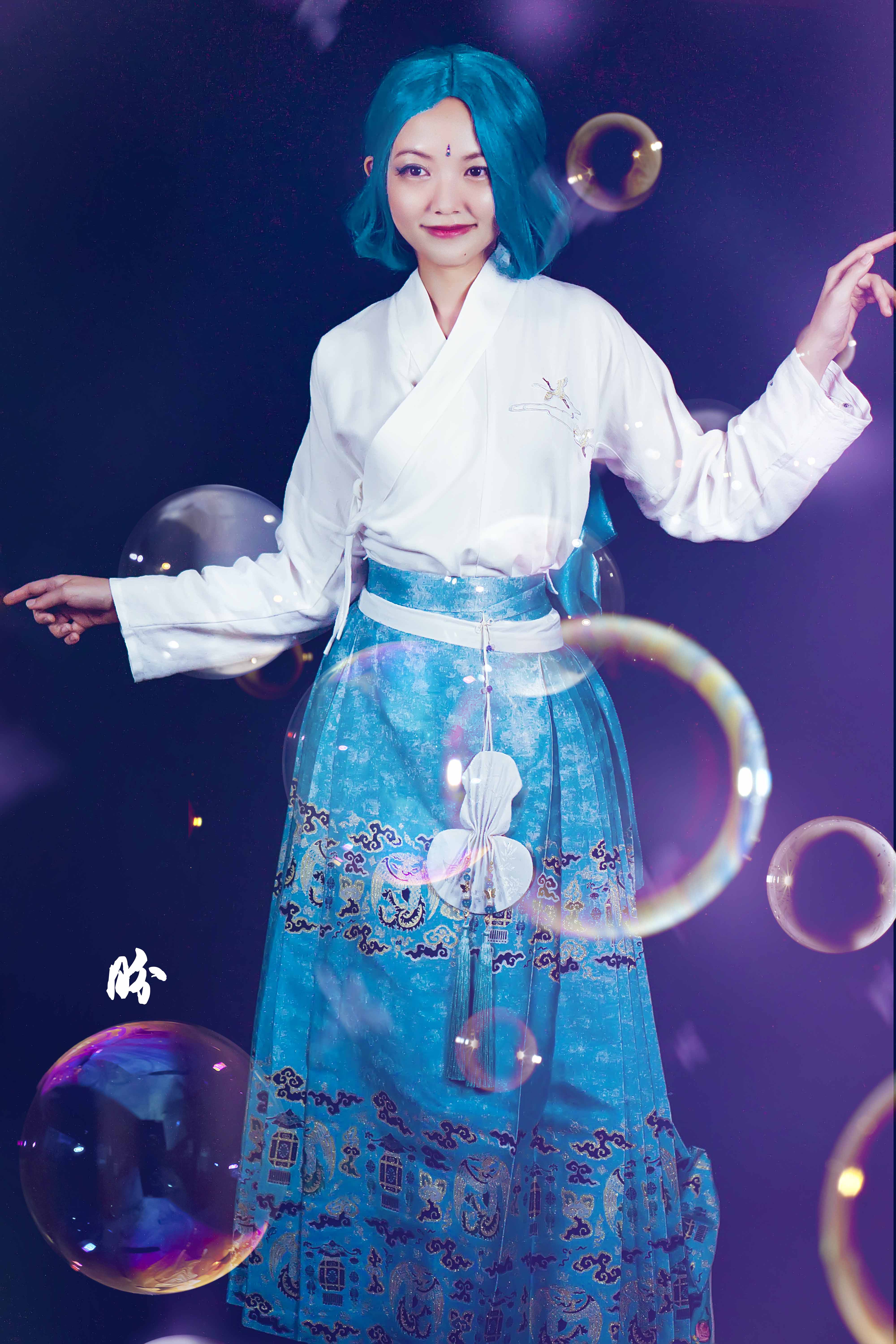
So I turn to the first part of the quote–to be loved. The Nymph of River Luo is possibly one of the most romanticised and loved goddess in ancient Chinese literature (and imagination) just like the Chinese equivalent of Sailor Venus. The difference?
One’s a girl, the other’s a woman (Britney’s song playing in the background). You tell me which is which after this article 😉
In the comic series, Sailor Mercury was said to be extremely helpless and troubled when it comes to love letters and affairs of the heart. And I thought well, perhaps if she awakened into her other ‘self’ as an ancient Chinese goddess of water element, she might have better luck in love (or not).
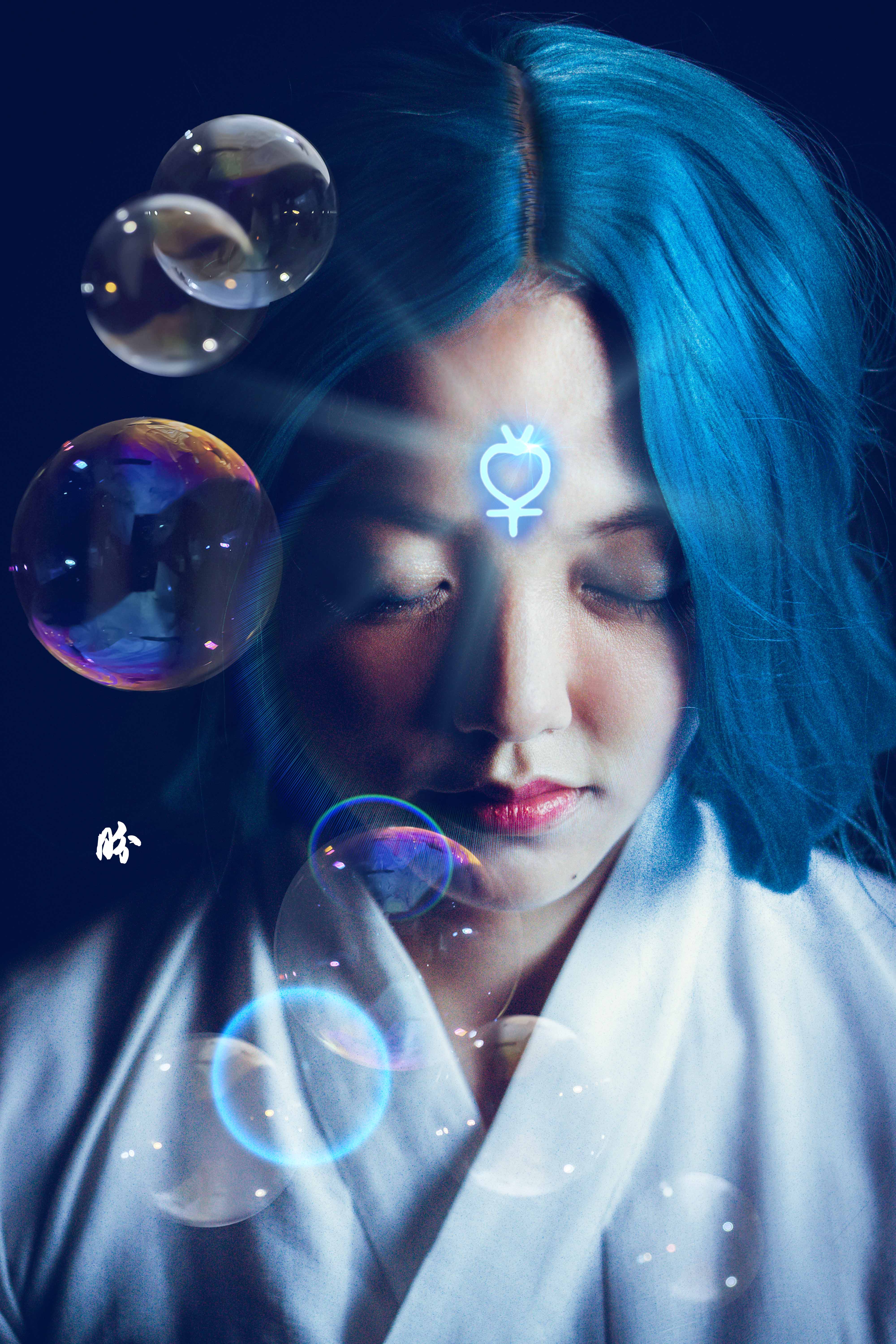
In Chinese culture, women were closely associated with water as echoed in the iconic quote from Dream of the Red Chamber where the male protagonist famously lamented that women were made of water.
Like Sailor Mercury, the nymph’s power was closely associated with water–but not in the catastrophic/antagonistic sense of it, but more like a gentle and soft guardian of the river. Sailor Mercury’s attack moves too, were more strategic rather than offensive.
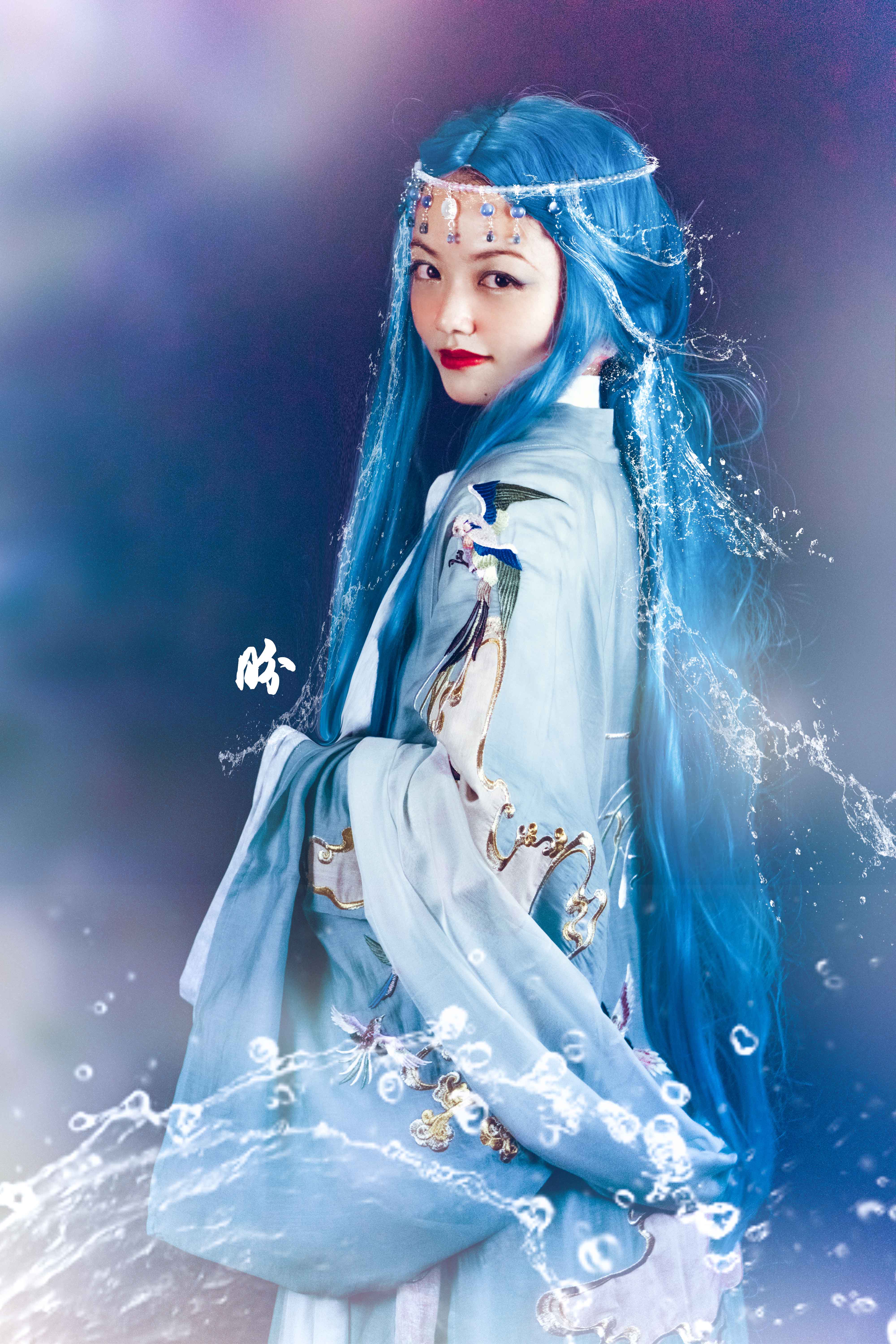
Original tales of the nymph-goddess revolved around a beautiful daughter of an ancient ruler who drowned while crossing the River Luo. She was then immortalised as a nymph/guardian of the Luo river and married to the God of Yellow River (AKA God of all rivers). It was said that the God of Yellow River was extremely ugly, perhaps to contrast with the beauty of the Nymph, or perhaps just to justify the reason why Yi the Archer (the one who shot down the 9 suns, and husband of Chang’E the moon goddess) felt justified to elope with/snatch the Nymph away.
Some extended variations of the tales mentioned the story of Yi the archer blinding the River God in one eye and getting together with the nymph of River Luo (while still being married to Chang’E, mind you). But it must be noted that ancient Chinese mythology does not have a coherent and clear genealogy like the Greek. You can read about a god/goddess/nymph in one story at one point in history, and the next thing you know, they appear in another story at a totally different time period as though they existed in parallel universes. Mapping out a family tree is impossible as a result, and stories are best taken in isolation, as just some independent romantic and creative expressions.
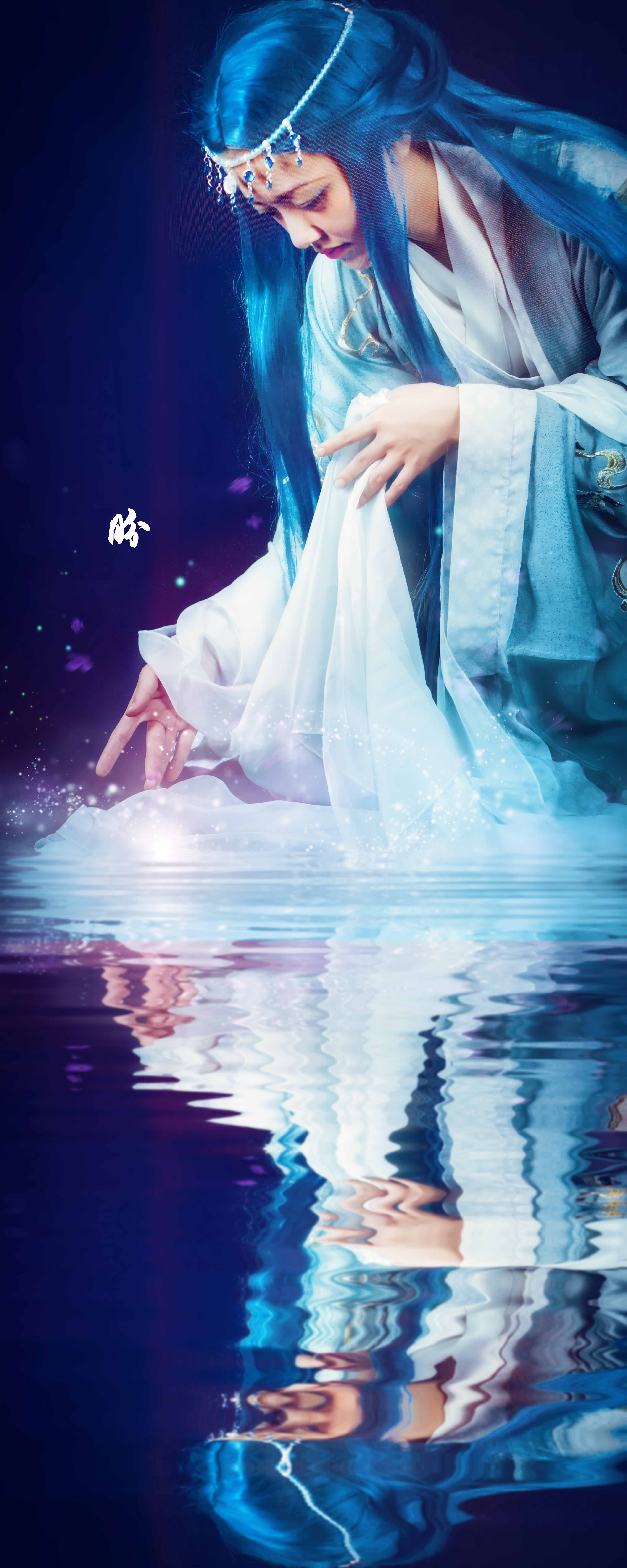
The Nymph of River Luo was made famous by the 3rd-century poem Ode to the Nymph of River Luo which was written by Cao Zhi (192-232 CE), a son of Cao Cao (one of the most powerful warlords of the time). There were theories that he wrote it with his sister-in-law in mind after being reminded of her tragic death. She was 10 years older than the poet, and 5 years older than his brother who was her husband/the succeeding warlord.
Shortly after the writer/poet’s ambitious and ruthless brother assumed the position of the king/warlord, he ordered the death of his wife within a year. She left behind a pillow of jade and gold, which her son in turn gifted to the writer/poet. The writer/poet dreamt of his deceased lover on his boat home, emerging from the waters below and drifting to his side.
Like the Birth of Venus by Botticelli, I imagined the Nymph of Luo River to emerge from beneath the waters, carrying droplets and dew in her hair. Her dresses and fabrics moved in the light breeze, like Venus’ hair. This was a scene that was also famously painted by one of the greatest artists in Chinese history who came about 100 years after the poet–Gu Kai Zhi (348-402 CE). Yes, I’ve written about him and this very piece of artwork attributed to him on the Nymph of River Luo earlier. It’s interesting how different culture and period, independent of each other, could have a similar concept of beauty and pristine femininity.
The nymph was depicted as someone whom the male protagonist chanced upon and they both fell in love with each other. It was beautiful while it lasted, as heaven and earth celebrated their love. But their happiness was not to be, and she had to leave him to return to where she came from, leaving behind a memento for him to remember her by.
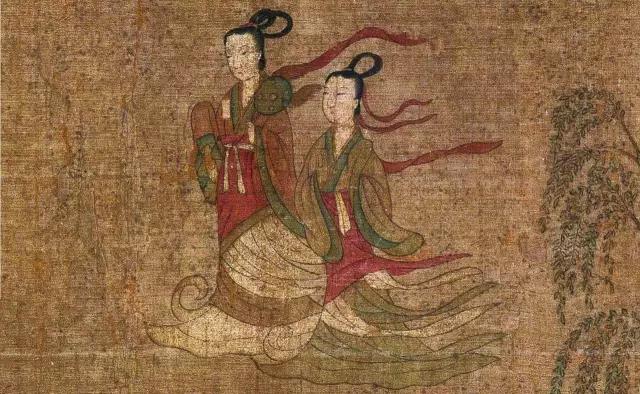
It was hard to appreciate the beauty of the painting that seemed so simple and 2-dimensional as someone who is more familiar with Western Art theories and history. But I have been reading up and learning more about the Chinese aesthetics and I am increasingly more impressed by how such few strokes of linework could bring out this sense of lightness and transience that is so iconic of mythological figures (just look at the picture and compare it to the painting). Bear in mind that this painting is an n-th replica from some unknown artist that lived hundreds of years (if not a thousand years) after the original painting was done.
In Chinese paintings, it is always about the linework and Gu Kaizhi was said to be known for his extremely fine and delicate linework like the silk from the spring silkworms. Of course, much of the essence might have been lost.
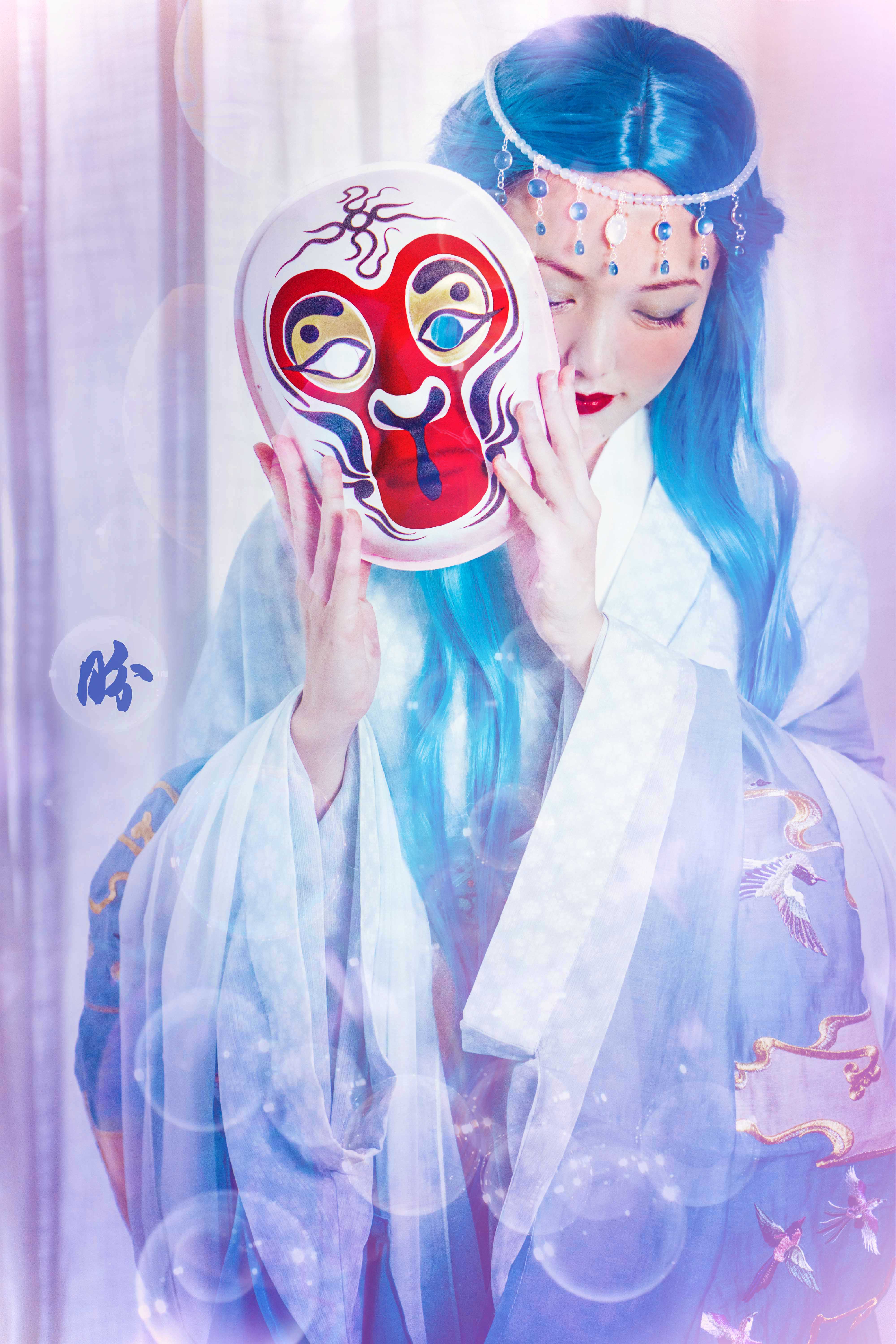
You might be curious why was the nymph holding the mask of a monkey (yes, this is the monkey face in Chinese opera), and that has got to do with the superpower of Sailor Mercury–water. In ancient Chinese mythology texts such as the Classic of the Mountains and Seas, the appearance of monkeys is often associated with floods and water troubles. Monkeys were said to have tried stopping Yu the Great architect from controlling the great flood in ancient times (possibly the one that Noah lived through), and in ancient Chinese horoscopes, Mercury was also depicted as someone who has a monkey hat and holding a brush. Mercury in East Asian culture had been assigned the Water element from ancient times, thus the use of water as the superpower possessed by Sailor Mercury.
It just occurred to me that Mercury’s association with water isn’t immediate to non-Asian audiences, simply because Mercury in Greek mythology has nothing to do with water! But that was my blind spot because I’ve always been thinking of Mercury in its Chinese name which literally means Water Star, so it was a no brainer that she should have powers of water.
And.. because I’ve not written in a while, excuse my rusty writing and here’s a nymph potato.
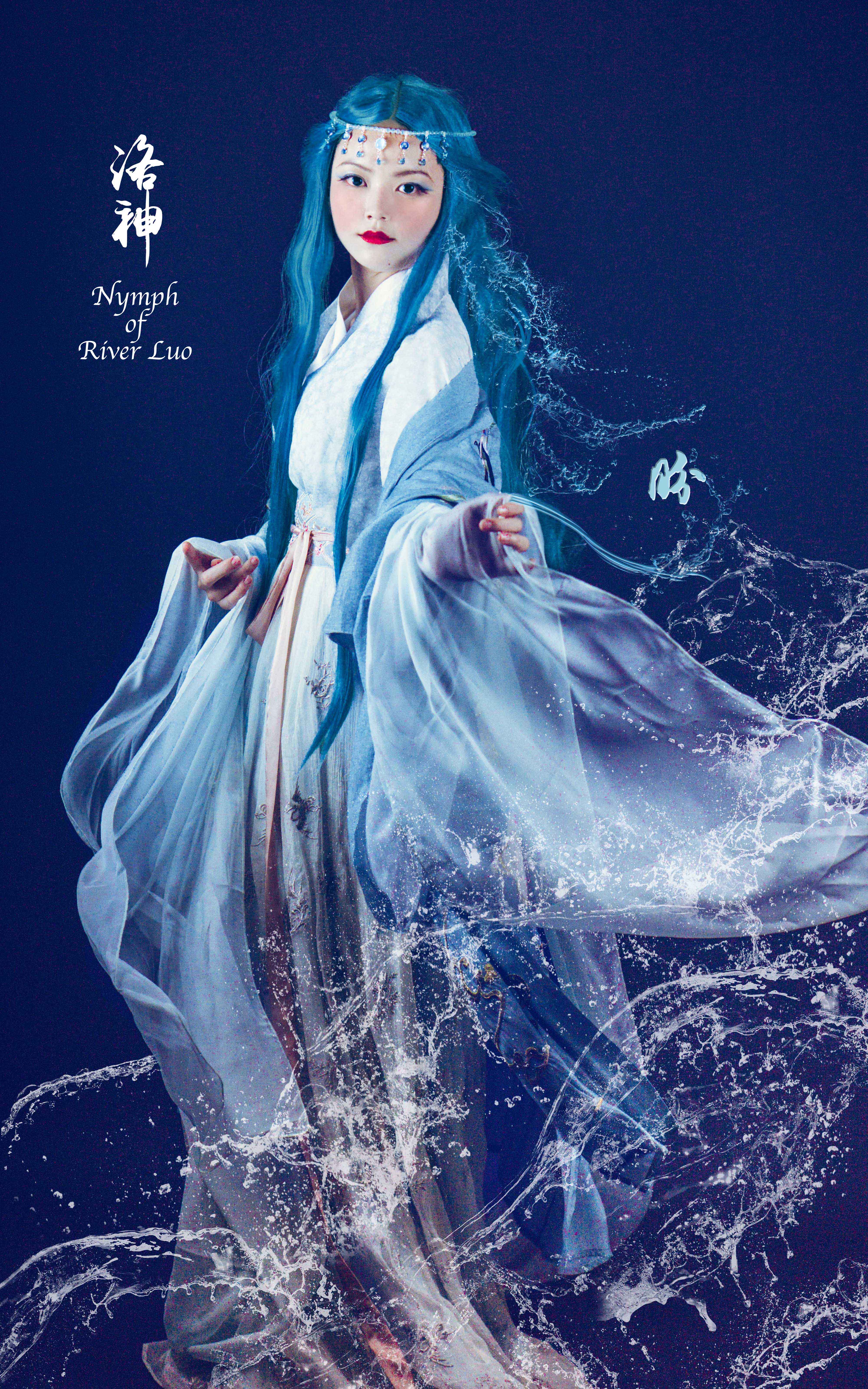
洛神,原名宓妃,是河伯之妻,被夏朝的有穷国君夷羿所霸占。后,曹植写洛神赋以悼念自己的爱人,也是他叔嫂。虽然属于野史,但也是很有意思的见解。然后顾恺之也凑热闹画了个洛神赋,洛神的衣服在风中飘,让我不由得想到了维纳斯的诞生(波提切利) 那被风神吹起的发丝。而顾恺之的特长也就是所谓春蚕吐司的线条了。
女子真的是水做的呀。柔情似水。一直都喜欢水星仙子,因为她不是靠脸吃饭的,而是靠实力。若干年前这种思想还不是很普遍,所以我觉得美少女还是很前卫的!
此外,山海经中多次提到猴子的出现的时候都是有水灾或和水有关。所以其中一张照片中才用了一个京剧净角猴子面具。

Leave a Reply